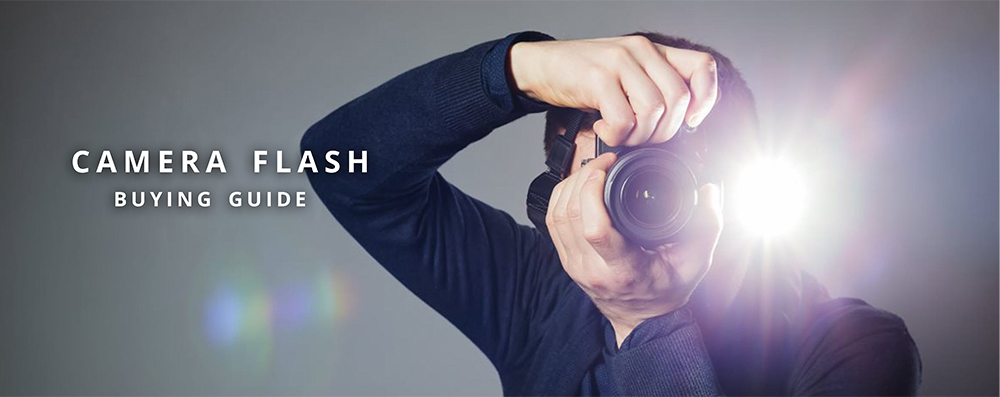Introduction
Flash is one of the most important parts of a camera as it helps in enhancing the quality of a picture while shooting. A flash made of three parts; head, body and foot. The foot of the flash has electrical contact points that help to trigger the flash into firing when it is mounted on the camera's hotshoe.
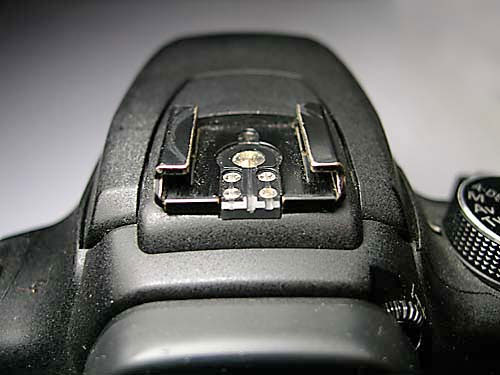
Camera Hotshoe
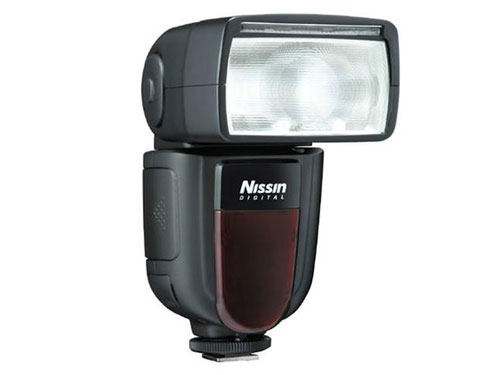
The flash of a camera is one of its essential parts because it enables photographers to get clear and bright pictures even in poor or low light. This proves to be advantageous for photographers who do night photography and need to deal with factors like distribution of light and treatment for certain photo shoots before shooting a particular picture. On-camera flashes are usually the ones that are preferred most by photographers as it provides additional light when the area is too dark. A flash is a creative tool that can enable photographers to enhance their imagery skills when they cannot depend on the natural lighting conditions to provide the required effect. An external on-camera flash typically has far better features when compared to the built-in camera flash.
Purpose of the Guide
In order to make it easier for photographers to purchase a suitable flash for their camera, we present this comprehensive buying guide. This guide will help you to understand the importance of a flash, and help you to choose the right kind of flash for your usage.
What is a Flash?
A camera flash is a device used for producing a flash of artificial light. This artificial light is generally used to illuminate a dark scene, though it can also help in capturing moving objects quickly. There are three basic types of camera flashes; on-camera flash, off-camera flash and in-camera flash.
On-camera flash is a type of strobe light that connects directly with the camera, though they can also be used as off-camera flashes. The on-camera flash uses a self-contained power supply. Additional power sources can be used to improve its performance if needed. The on-camera external flashes are considered to be better than the built-in flash integrated into the camera. The built-in flashes are usually located near the camera lens which may lead to the red-eye effect while shooting pictures, especially in dimly lit areas. When the built-in flash is aligned with the optical axis of the lens, the pupils dilate causing light to enter the eye and reflect back at the camera. This reflected beam of light is red in color which causes the red-eye effect in the picture. The use of on-camera flash taken off-camera from a different angle can help in eliminating the effect of red-eye when capturing pictures.
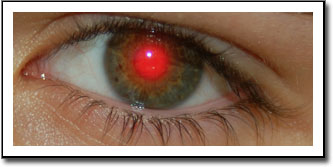
Red-eye effect from camera flash
Features of a Flash
A camera flash is an optional part of the camera and is useful when modifying the lighting conditions in which the picture is being captured. We will go over the features of camera flashes to help you choose the best one for your needs.
Guide Number
The Guide number is used to evaluate the power and ability of the flash to illuminate a scene at a particular film speed or sensor. To be precise, the exposure constant for a flash unit is depicted by the guide number. A Guide Number (GN) signifies that the flash is more powerful. The bigger guide number indicates that subjects far away from the photographer can also be illuminated easily. The guide number is calculated by using the following formula:
(Guide Number = Aperture x Subject to Flash Distance)
The metric for guide number can vary and can be reported in feet or meters depending on the flash manufacturer. This feature is sometimes even dependent on the ISO 100 film speed or sensor sensitivity.
X-Sync Speed
The X-Sync speed indicates the fastest shutter speed that can be selected on a camera when firing a flash simultaneously. When the limit of x-sync speed is reached, it shows actual shutters on the the photo which is because of the light burst being too quick for the camera. These days most cameras have x-sync speed at 1/200 or 1/250. Photographers can get faster speeds by selecting the Hi-Speed option on the flash/camera and use it at faster shutter speeds.
Masters and Slaves
There are two major types of flash groups namely, slaves and masters. The photographers who need more than one flash need to opt for master flash that triggers other flashes when it is fired on command. The slave flash cannot control other devices but can be fired on command.
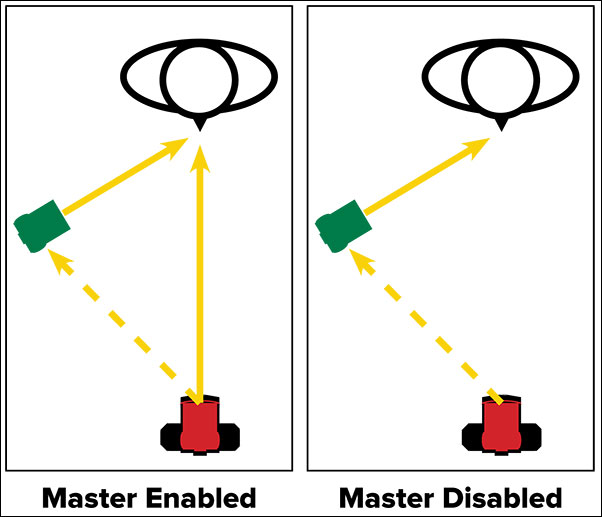
Example of Master and Slave setup and funtionality
Tilt and Swivel
External flash enables photographers to bounce the light from various objects such as studio umbrellas or even a wall simply by rotating the flash head. This allows lighting to be softened or directed to light the shot perfectly and eliminates the hash shadows of direct flashes.
Flash Power
The flash power can be controlled easily based on the flash's intensity and direction. Flash power is measured in half increments and are depicted as full power, half power, quarter power, etc. When buying a new camera flash, it is necessary to check its power, that will signify the amount of light the flash can emit at full power.
Utilities of Flash
Flashes can be used in night time, daylight, or low light shots, indoors or outdoors. They can also be used to manage shadows or create lighting effects for your shots.
Top 5 Manufacturers
Even though camera flashes are optional, they prove to be extremely beneficial when shooting pictures in low light conditions. There are many leading manufacturers that produce high quality camera flashes based upon the cameras on which it is going to be used. Listed here are the top five manufacturers of camera flashes that provide the best quality flashes to photographers.
Canon is a well-known Japanese company that specializes in imaging and optical products. Some of the popular products offered by Canon are cameras, camcorders, computer printers, camera flashes and much more. They produce popular, well built flashes for their cameras.
Nikon is another well-known Japanese organization that provides a wide range of optical and imaging products such as cameras, camera lenses, binoculars, camera flashes and many more optical products. The flashes available for Nikon cameras are known to be of best quality making it one of the top manufacturers in the world.
Sigma is the largest independent lens manufacturer in the world and provides a huge range of imaging products like cameras, lenses, flashes and many other photographic accessories. Sigma flashes and lenses are compatible with many cameras from Canon, Nikon, Pentax, Sony, Olympus and Panasonic.
A world famous manufacturer of optics and photography products is Olympus. It is a well-recognized corporation that provides a variety of optical and imaging products including cameras, flashes, lenses and more.
A leading brand in electronic flash units, Nissin provides high quality flashes to photographers. Nissin is a preferred brand for professional photographers to buy high-end camera flashes at great deals. Sunpak flashes are famous for their innovative technology that ensures a photographers accuracy when shooting photos.
Terminology
Before purchasing the camera flashes, it is necessary to know the important terms that are to be considered when buying them. Here, those important terms have been highlighted with what they mean.
- Guide Number:
- Used to evaluate the power and ability of the flash to illuminate a scene at a particular film speed or sensor.
- X-Sync Speed:
- Indicates the fastest shutter speed that can be selected on a camera.
- Masters and Slaves:
- These are two groups of flashes wherein master flash is used when the photographer needs to use more than one flash at the same time.
- Tilt & Swivel:
- The light from the external flash bounces on various objects when the flash head is rotated. It indicates that flash head should be rotated to ensure that harsh shadows are not formed during shooting.
- Flash Power:
- Indicates the source of light whose intensity and direction can be controlled by the photographer.
